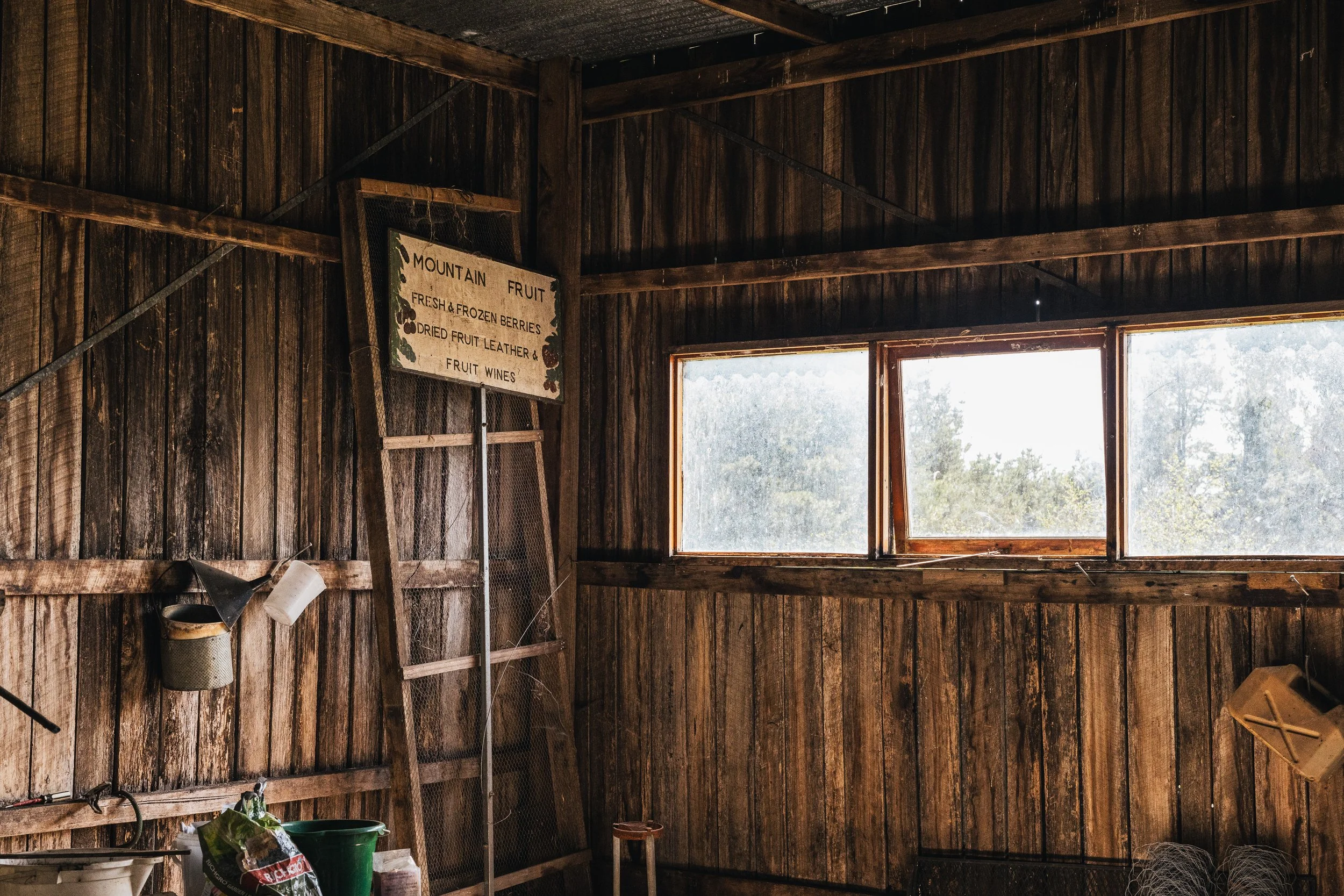
Before us
Geology
Plump Berries' farm is located on rolling hill country in Barrington, lutruwita (Tasmania). The deep and well structured ferrosol soil with a red or red-brown colour has been selected as Tasmania’s ‘iconic’ soil (by the Tasmanian branch of Soil Science Australia). The red colour comes from oxidisation of the iron in the soil as it is exposed to the elements. In Tasmania these soils formed mainly from the weathering of basalt, a volcanic rock extruded as lava by numerous small volcanoes in northern Tasmania some 10-50 million years ago.
First Nations
Plump Berries are grown on the traditional lands of the First Nations of lutruwita (Tasmania). The Plump Berries farm is near the Kentish plains, land that the Tommeginne people cleared by fire and managed as kangaroo hunting grounds until the 1820s when European colonisers settled in the plains and deprived First Nations people access to the land.
We acknowledge our privilege as non indigenous people farming this land. We also recognise that there is a rich tradition of First Nations people caring for country, and that indigenous knowledge informs many of the natural farming methods that we adopt. We acknowledge the palawa and pakana people of lutruwita and the ongoing effects of colonisation and dispossession upon them.
Settler-Colonial History
Local historian Alan Dyer reports that Barrington was covered in dense eucalyptus forests when it was colonised. The colonial settlers realised that the forest grew on very rich fertile soil and started to clear it for cropping.
The colonial land grant for the area that included the location of Plump Berries farm was to Thomas Smith. The Smith family claimed the land on both sides of the road. Second son Thomas and his wife Jessie lived on the Plump Berries side of the road.
The house on Plump Berries Farm (our home) was built in 1965 by the Cox family. The ‘old house’ next door was demolished when the ‘new house’ was built. The Cox family ran cattle on the farm and sold cream to the butter factory.
In 1968 the Devil’s Gate Dam was created as part of the Mersey-Forth Hydro Scheme and Lake Barrington began to fill. The name ‘Devil’s Gate’ was adopted for both the dam and the road, as there were several ‘Hell’s Gates’ around the state already.
The Ertler family lived at 10 Devils Gate Road in the 1980s. They installed the bright yellow benchtops that still brighten our kitchen (they are now a little bit faded).

Schwind family - ‘Mountain Fruits’
The Schwind family established the fruit farm in the 1990s.
Extensive fruit crops were established including: raspberries, blueberries, blackberries, loganberries, tayberries, red currants, black currants, gooseberries, sour and sweet cherries and more!
We acquired fruit wines produced by the Schwinds using fruit grown on the property.
Plump Berries
We arrived at 10 Devils Gate Road and Plump Berries began.





